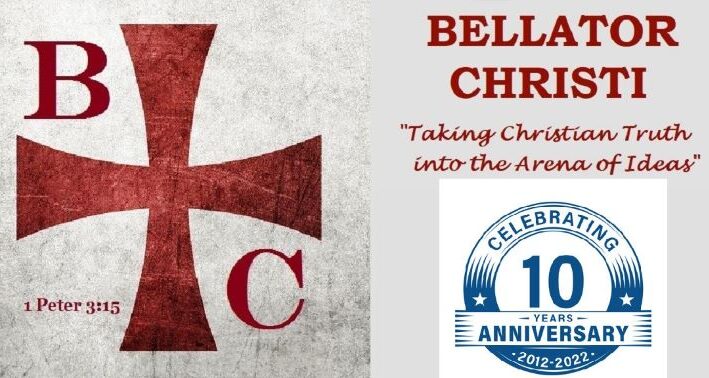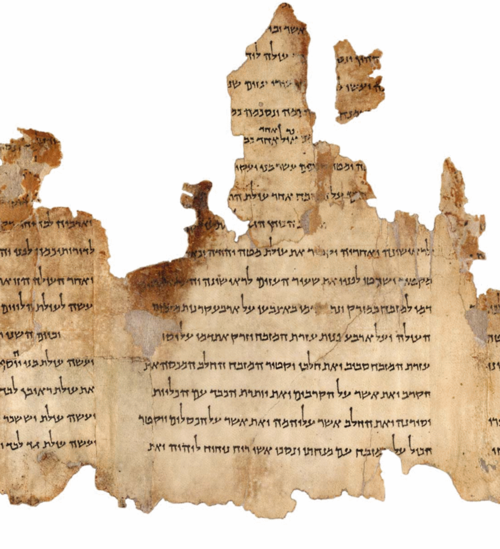By: Bruce Price | April 17, 2023
Indiana Jones making a conquest to find lost artifacts and fighting to hold on to them created a new passion for archaeology. This newfound desire for conquest and a love for history led to the study of artifacts discovered with a connection to the Bible. For the past 200 years, archaeologists have uncovered artifacts that have provided plausible evidence for many events outlined in the Bible. The subset of biblical archaeology has demonstrated the ability to bridge biblical events with secular history. However, a methodological approach to determine what artifacts should be used as an apology for the faith has not been utilized to demonstrate this proposed bridge. If artifacts were classified into various strata to aid the archaeologist and the apologist, the overlap of the biblical record and recorded history would prove complementary. This work proposes a method of classifying biblical artifacts and provides examples of discoveries and how they should be classified. Finally, the limitations of archaeology (i.e., access to relevant sites and funding to conduct excavations) are notable and acknowledged. Randall Price states, “Many of these known sites, however, can never be properly surveyed because of a lack of resources or political disputes over territories.”[1] These limitations directly impact the archaeological data of the biblical landscape. However, despite the fractional amount of excavations and published findings, there is still overwhelming evidence to defend the historicity of the biblical narratives.
Methods of Classifying Archaeological Artifacts
Artifacts are only as reliable as the archaeologist conducting the study. It is difficult to accept archaeological discoveries that are not documented in a professional and scholarly fashion. Artifacts are classified by excavation location, material make-up, content, and dating. These descriptors help archaeologists catalog artifacts, but these classifications alone do little to help the apologist determine how archaeological artifacts can help in their defense of the faith.
Suppose scholarly professionals conducted the discovery of artifacts being explored. In that case, this work proposes classifying biblical artifacts into the following apologetics strati: 1) Non-Biblical, 2) Biblically Similar, 3) Biblically Referenced, 4) Biblically Significant, and 5) Biblically Affirmed. The following examples of biblical artifacts, divided into Old and New Testament categories, demonstrate the possibility of identifying the apologetic value of archaeological discoveries.
Old Testament Examples
Dead Sea Scrolls: Great Isaiah Scroll
The Hebrew Bible, the Christian Old Testament, was written between the Fifteenth and Fifth centuries B.C. However, until the Twentieth Century, the oldest copy attained was from the Tenth Century A.D., known as the Masoretic Text. However, one of the greatest biblical archaeological discoveries, the Dead Sea Scrolls, would significantly change the date of the oldest copies. Analysis of the Dead Sea Scrolls, written in Hebrew, revealed several Old Testament books, demonstrating the archaeological discovery’s authenticity, accuracy, and antiquity. Scholars have found the scrolls and the Masoretic Text to be 95% identical. The Great Isaiah Scroll (i.e., 1QIsaiah-a) comprises 17 pieces of parchment, containing all 66 chapters, except for a few places where the document has been damaged.[2] These scrolls date back to the First Century B.C. This is a great example of a “biblically affirmed” artifact. It demonstrates that the Bible has not changed in the millennium between the time of the Dead Sea Scrolls and the Masoretic Text. This is a great example of a primary source for an apologetic of the historicity and reliability of the Bible.
Jehoiachin’s Daily Rations: The Ration Tablets
The Ration Tablets are cuneiform tablets dated to the Sixth Century BC and found in Babylon. The tablets describe the rations given to Jehoiachin while in prison. They are another historical discovery confirming what the prophets had recorded concerning King Jehoiachin, specifically in Kings, Jeremiah, and Ezekiel.[3] This artifact further clarifies the conditions of the king’s prison term. However, it does not reach the level of biblically significant or affirmed. Therefore, this artifact should be classified as a “biblically referenced” artifact. Although this discovery is interesting and important, it should be used only as background information when considered for apologetics.
Belshazzar and Daniel: Cylinders of Nabonidus
The identity of Belshazzar, king of Babylon, had not been found in any historical record, except the prophet Daniel, until an ancient Babylonian text was found in 1854 by J.E. Taylor. On one of the cylinders of Nabonidus, he is praying to the moon god Sin and praying for his oldest son Belshazzar. On another tablet, Nabonidus records leaving Babylon on a long excursion and leaving his firstborn son, Belshazzar, to rule Babylon as his co-regent. This verifies the reality and accuracy of the book of Daniel, which dates to 550 BC. Until these discoveries were made, “critics had long dismissed the book of Daniel as mythological embellishment since he had recorded the name Belshazzar as the king of Babylon.”[4] Holden continues, “Critics claimed Belshazzar did not exist, that is until a similar discovery was made” when the Shagaraki-shariah was found identifying Nabonidus’s son, and co-regent, as Belshazzar.[5] These artifacts are great examples of “biblically affirmed” cases. These narratives recorded in the Scriptures were accurate for millennia before archaeologists discovered artifacts that demonstrated the accuracy of Daniel’s historical record.
The Persians Capture Babylon: Nabonidus Chronicle
From Daniel’s record of Babylon, the ruler, Darius the Mede, has always been somewhat of a mystery. Daniel does not describe a battle for the city or name Cyrus, the king. The Nabonidus Chronicle affirms that there was no fight for the city, as Belshazzar dies, and the city falls. The Chronicle further records that Cyrus was not leading the army that entered Babylon, but a general from Media led the army and ruled Babylon for up to four years. These Chronicles date to the Fourth Century BC.[6] Again, as stated above, this is an example of “biblically affirmed” artifacts. These records found in the Scriptures were accurate for more than a thousand years before archaeologists discovered artifacts that demonstrated the accuracy of Daniel’s historical record.
New Testament Examples
Caiaphas the High Priest: Caiaphas Ossuary
The Caiaphas Ossuary was found just outside Old Jerusalem in a wealthy family tomb dating to the First Century A.D. The ossuary is ornate and has the inscription “Yehosef bar Qayafa” (Joseph, son of Caiaphas), perfectly fitting the New Testament Greek spelling of the family name Kaiafa. The tomb had 12 ossuaries with the family name Caiaphas inscribed on them. Ossuaries stopped being used in A.D. 70, so Caiaphas’ death would have been before 70 and after A.D. 43. This is known because of a coin dated inside the skull. He was replaced as High Priest in A.D. 36; therefore, it fits the Caiaphas who oversaw the trial of Jesus and pressured Pontius Pilate to crucify Christ.[7] Due to the gravity of the role Caiaphas played in the passion of Christ, and the significant reliability of this ossuary belonging to “the” Caiaphas, this artifact should be considered a “biblically affirmed” find.
James, Brother of Jesus: James Ossuary
In Judea and Galilee, using ossuaries was common to store relatives’ bones in a family tomb from 100 BC-AD 70. Though previously moving through antiquity markets, the James Ossuary was revealed in 2002 with the inscription in Aramaic that translates to, “James the son of Joseph, brother of Jesus.” Because of the weight and significance of these names and relationships, this ossuary gained immediate fame. Although it has come under scrutiny, many well-respected scholars agree that the ossuary and inscription are authentic.[8] Though questions remain concerning certain aspects of this artifact, they are significant because of the people named on these ossuaries. Due to the limited data, this artifact should be considered “biblically significant.”
Conclusion
The number of artifacts, related to the biblical narrative, are too immense to record in an article. Hundreds of artifacts have been identified as biblically important. Archaeology may not be able to prove the entire scope of biblical narratives definitively. However, it can certainly benefit the apologist defending the historicity and reliability of the Bible. This work concludes that non-biblical and biblically similar artifacts should rarely be used in apologetics. Biblically referenced and biblically significant should be used as a secondary defense that builds upon other primary sources. Finally, biblically affirmed sources are the archaeologist’s best case for using artifacts as primary sources in an apologetic defense for the reliability of the Bible. This work proposes that, given enough time and resources, archaeology could uncover the evidence necessary to demonstrate the accuracy and reliability of the biblical narrative from cover to cover.
About the Author

Dr. Bruce Price is married to Sonya (23 years) and they have five children (Sarah 19, David 18, Daniel 14, Hannah 10, and Isaac 7). Bruce played baseball at the College of Charleston and was drafted by the Cincinnati Reds in the 1998 Amateur MLB Draft. However, Bruce felt God’s calling on his life to ministry instead of the baseball diamond. Bruce served in a couple youth and discipleship ministries before accepting the call of Senior Pastor at Buffalo Baptist Church of Blacksburg, SC. Bruce has served in this position since 2001. With a background in Mathematics and Physics, he entered Seminary with strong interest in Systematic Theology and Apologetics.
Bruce enjoys the interplay between the sciences and theology, especially in the area of Coherence of Christian Theism from a logical and biblical perspective. His greatest joy (apart from his relationship with God through Christ) is his family. The following is Bruce’s educational information: Currently a Ph.D. Candidate in Theology and Apologetics (Liberty); EDD, Cognate in Cognitive Theory (2012) Southeastern Baptist Theological Seminary, Wake Forest, NC; MDiv in Theological Studies (2009) Liberty University; MAR in Biblical Studies, (2007) Southeastern Baptist Theological Seminary, Wake Forest, NC; MSS in Mechanics and Physiology, (2004) U.S. Sports Academy, Daphne, AL; BS in Mathematics and Physics, (2001) Limestone University, Gaffney, SC.
Copyright 2023. Bellator Christi.
Notes
[1] Randall Price, The Stones Cry Out, 46.
[2] Titus Kennedy, Unearthing the Bible: 101 Archaeological Discoveries that Bring the Bible to Life, (Eugene, OR: Harvest House Publishers, 2020), 172-174. *The titles and subtitles from this section of Old and New Testament examples are representative of the work that has been published by Titus Kennedy.
[3] Ibid., 158-159.
[4] Holden and Geisler, Popular Handbook of Archaeology and the Bible, 276.
[6] Titus Kennedy, Unearthing the Bible, 162-163.
[7] Ibid., 188-189.
[8] Ibid., 224-225





